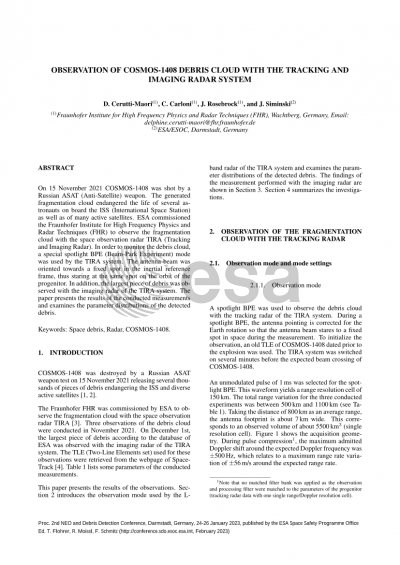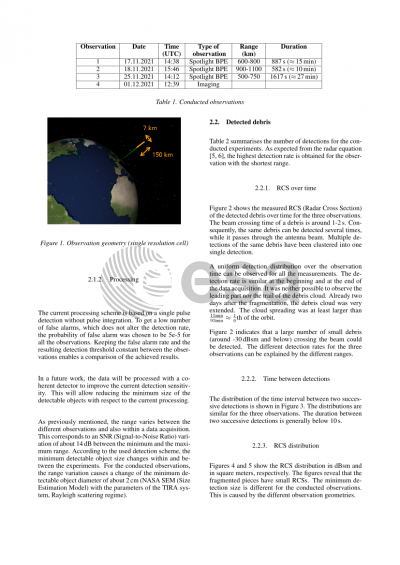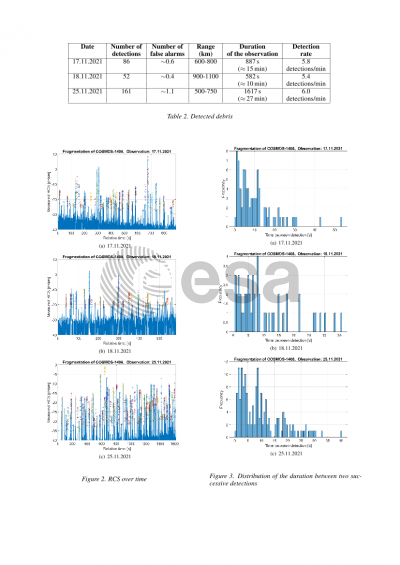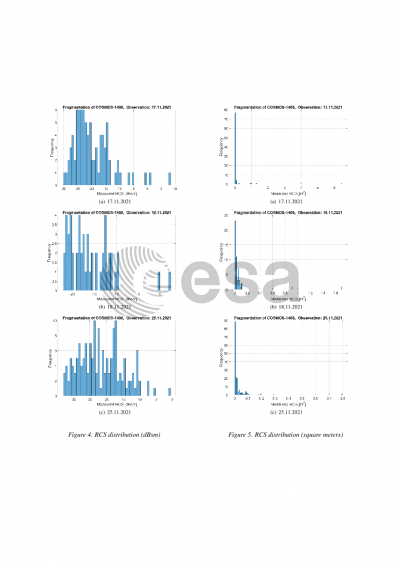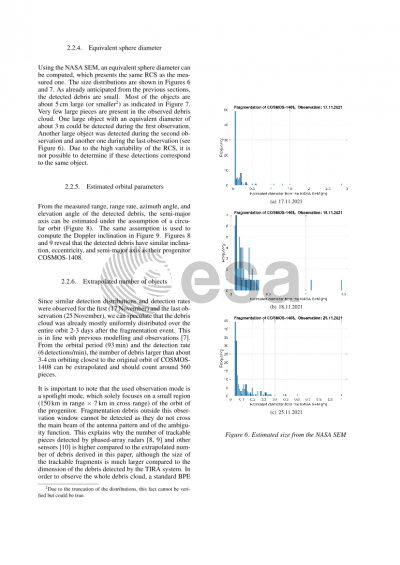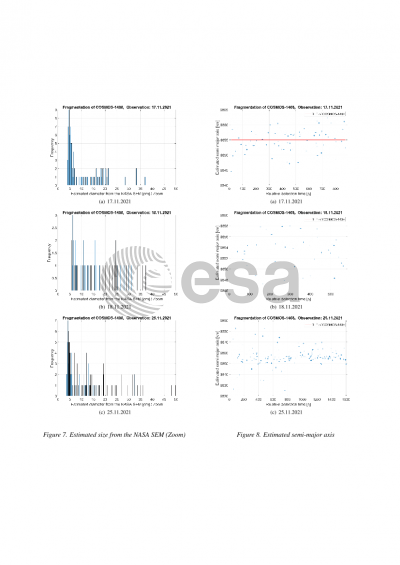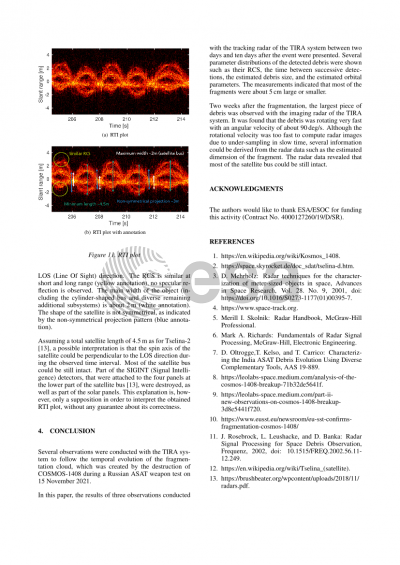Document details
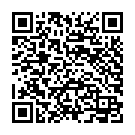
Abstract
Cosmos-1408 was destroyed by a Russian ASAT (Anti-Satellite) weapon test on 15 November 2021 releasing several thousands of pieces of debris endangering the ISS (International Space Station) and diverse active satellites. Several observations were conducted with the TIRA (Tracking and Imaging Radar) system to follow the evolution of the fragmentation cloud over time. In order to monitor the debris cloud, a special spotlight BPE (Beam-Park Experiment) mode was used, which has proved to be particularly useful for the observation of a (new) fragmentation event. During a spotlight BPE, the antenna beam is oriented towards a fixed spot in the inertial reference frame. This is achieved by compensating the Earth rotation so that the antenna always stares at the same spot on the selected orbit. To initialize the observations, a TLE of the progenitor COSMOS-1408 (dated prior to the explosion) was taken. The TIRA system started transmitting several minutes before the expected beam crossing of COSMOS-1408. An unmodulated pulse of 1 ms was chosen for all the observations. The averaged observation volume was about 5500 km3. This volume arises from the observed slant swath of 150 km and the average antenna footprint. During pulse compression, the maximum admitted Doppler shift around the expected Doppler frequency was ±500 Hz.
The used detection scheme for the present investigation relied on a single pulse detection without pulse integration. A low probability of false alarm (PFA) was selected to obtain a small number of false alarms, which does not alter the detection rate. In order to compare the detections between the different observations, the detection threshold was kept constant for all the measurements.
Several results will be shown such as the RCS (Radar Cross Section) distribution of the detected debris, the time between different detections, the estimated debris size using the NASA SEM (Size Estimation Model), and the estimated orbital parameters. It could be observed that, already two days after the fragmentation event, the debris cloud was distributed over the whole orbit. From the orbital period and the observed detection rate of about 6 detections/min, the number of debris larger than about 3-4 cm orbiting close to the original orbit of Cosmos-1408 was estimated to be around 560 pieces.
Two weeks after the fragmentation, the largest piece of debris was observed with the imaging radar of the TIRA system. It was found that the debris was rotating very fast with an angular velocity of about 90 deg/s. Although the rotational velocity was too fast to compute radar images due to under-sampling in slow time, several information could be derived from the RTI (Range Time Intensity) plot, which will be presented.
Preview
